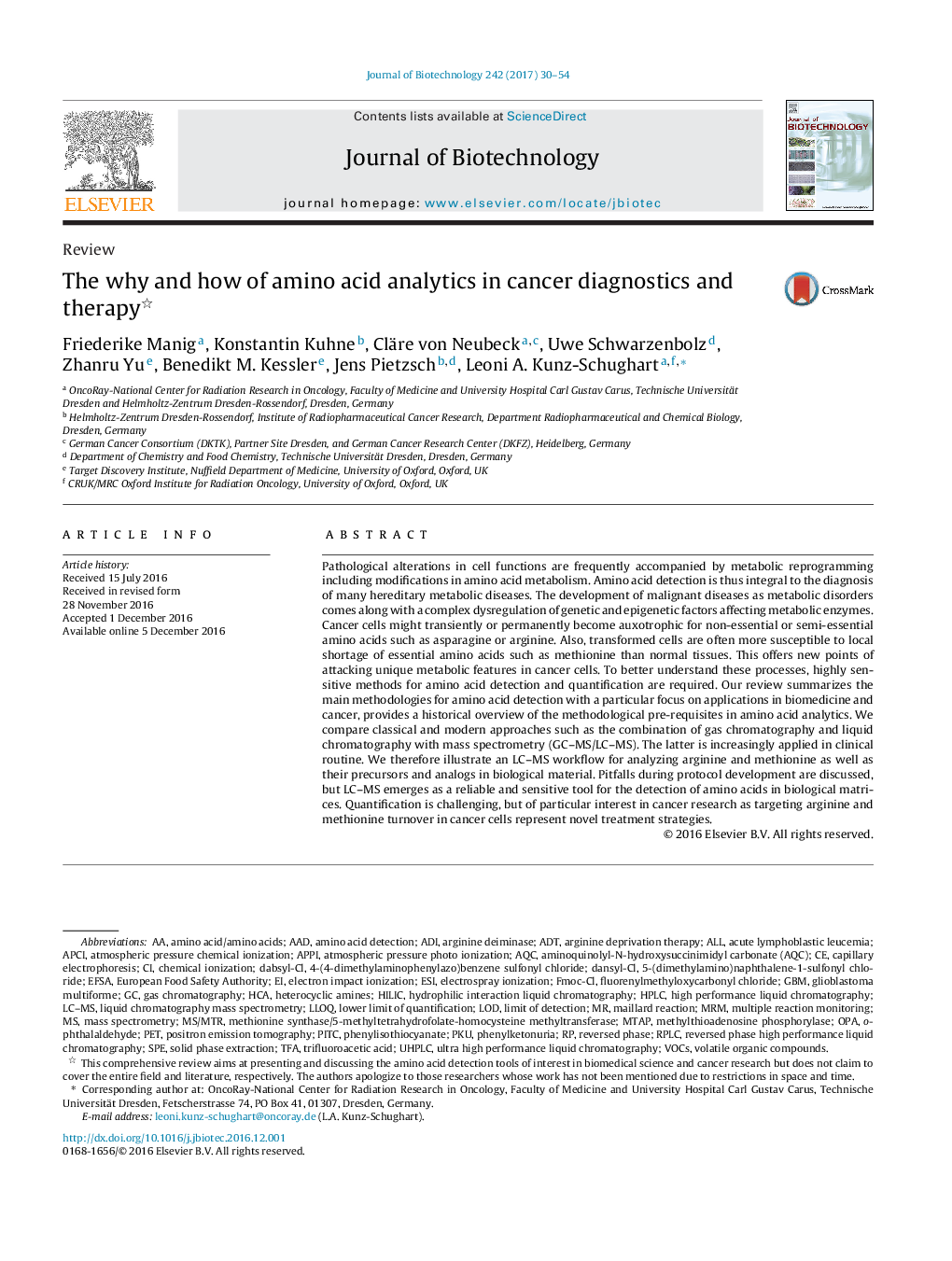| کد مقاله | کد نشریه | سال انتشار | مقاله انگلیسی | نسخه تمام متن |
|---|---|---|---|---|
| 6452222 | 1417002 | 2017 | 25 صفحه PDF | دانلود رایگان |
- Chromatographic amino acid detection is integral to basic and applied life sciences.
- Amino acid (AA) metabolism is important in health and disease.
- Abnormal AA metabolism in cancer opens window for novel theranostic concepts.
- AA targeting therapies require sensitive tools for monitoring treatment success.
- GC-MS and LC-MS allow standardized, sensitive AA profiling in biological matrixes.
Pathological alterations in cell functions are frequently accompanied by metabolic reprogramming including modifications in amino acid metabolism. Amino acid detection is thus integral to the diagnosis of many hereditary metabolic diseases. The development of malignant diseases as metabolic disorders comes along with a complex dysregulation of genetic and epigenetic factors affecting metabolic enzymes. Cancer cells might transiently or permanently become auxotrophic for non-essential or semi-essential amino acids such as asparagine or arginine. Also, transformed cells are often more susceptible to local shortage of essential amino acids such as methionine than normal tissues. This offers new points of attacking unique metabolic features in cancer cells. To better understand these processes, highly sensitive methods for amino acid detection and quantification are required. Our review summarizes the main methodologies for amino acid detection with a particular focus on applications in biomedicine and cancer, provides a historical overview of the methodological pre-requisites in amino acid analytics. We compare classical and modern approaches such as the combination of gas chromatography and liquid chromatography with mass spectrometry (GC-MS/LC-MS). The latter is increasingly applied in clinical routine. We therefore illustrate an LC-MS workflow for analyzing arginine and methionine as well as their precursors and analogs in biological material. Pitfalls during protocol development are discussed, but LC-MS emerges as a reliable and sensitive tool for the detection of amino acids in biological matrices. Quantification is challenging, but of particular interest in cancer research as targeting arginine and methionine turnover in cancer cells represent novel treatment strategies.
Journal: Journal of Biotechnology - Volume 242, 20 January 2017, Pages 30-54
